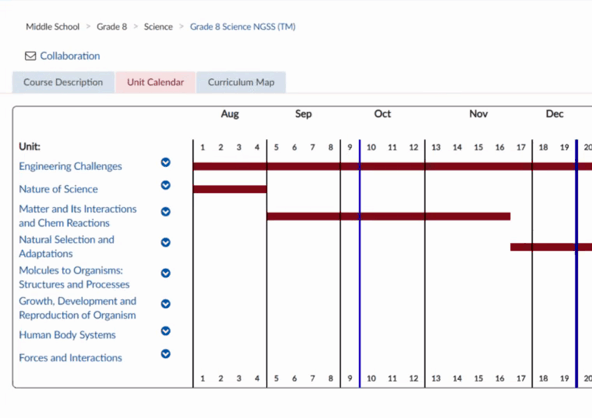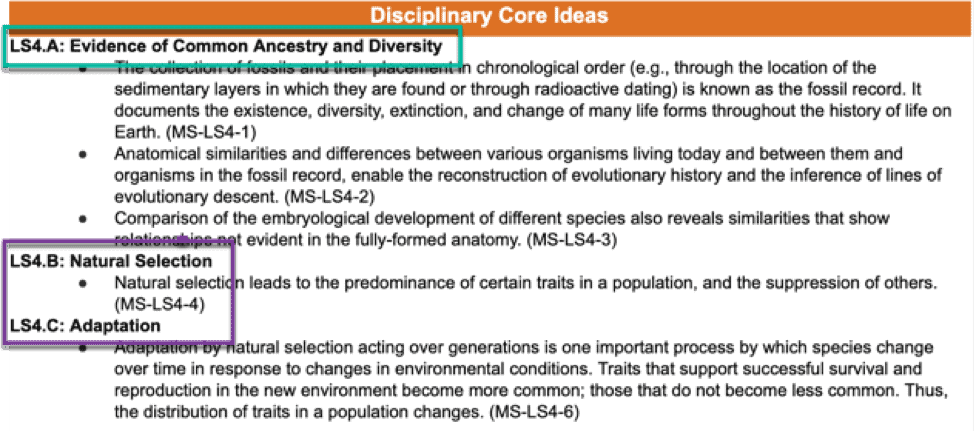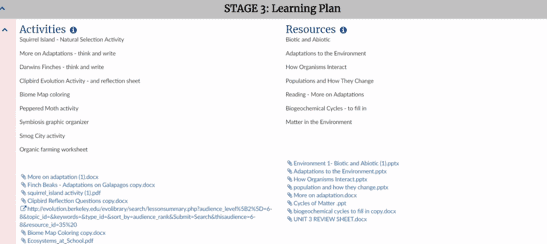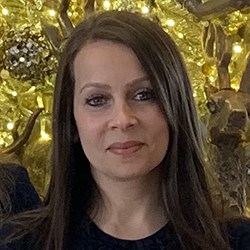Written by Tanya Macedo
In 2014, I was a new middle grade science teacher at the American School of Rio de Janeiro (EARJ), Brazil. I was a career-changer, enjoying a newly found passion for teaching after leaving a career in pharmaceuticals. Beginning a new job in a new city (in a foreign country!) is tough and I was ready for the challenge!
When I arrived at EARJ, I was excited to see what previous teachers had been doing in that course in years past. No such luck. I opened the Atlas map and it was barren, nothing uploaded or filled in. I vowed to “pay it forward,” to make my maps rich with content to serve not only me, but also any future teachers who might come to EARJ during their teaching journey.
 Armed with NGSS, a blank course map, and my enthusiasm, I asked myself, “Where do I start?” From former experience in pharmaceuticals and my teacher training, I was comfortable with the idea of backwards planning. So, I started with Stage 1 and decided to start by breaking up the course into units and load them into the Atlas calendar.
Armed with NGSS, a blank course map, and my enthusiasm, I asked myself, “Where do I start?” From former experience in pharmaceuticals and my teacher training, I was comfortable with the idea of backwards planning. So, I started with Stage 1 and decided to start by breaking up the course into units and load them into the Atlas calendar.
- How many weeks for each unit?
- Will I give an equal amount of time to each unit? Do some units have more standards, and thus need more time devoted to them?
- Do the other grades in middle school cover some of these topics? Would I be able to go through them faster (thank you spiraling standards), or do I need to spend more time working on them?
After some initial investigation into other science courses and conversations with my colleagues, this is how I broke up the units over the year.
Next step in Stage 1: Standards
Here is a quick recap of how the NGSS website and standards are organized. Understanding the different elements within NGSS will help teachers organize their units and standards alignment without being overwhelmed by the volume of the information the site provides.
Disciplinary Core Idea (DCI): These are the key ideas that the students need to understand and take with them for further learning in upper level science.
‘Natural Selection leads to the predominance of certain traits in a population and the suppression of others.’
Science and Engineering Practices: These are ways you want students to practice and use science.
“being able to analyze data & identify linear and non-linear data”
Cross Cutting Concepts: These are concepts that should be emphasized repeatedly throughout this and other science courses.
“Phenomena can have more than one cause & patterns can be used to identify cause and effect.”
For this blog I’ll use the unit titled Natural Selections in Adaptations. After selecting the DCI MS-LS4B: Natural Selection, I chose the standards that were associated with my unit and in this case, there were 5 standards.
After I was satisfied with my initial pacing guide and standards alignment within the units, I started to plan my unit by filling in the Essential Questions and Enduring Understandings in my map.

My Essential Question:
“How do organisms change over time in response to changes in the environment?”
My Enduring Understandings:
Fossil records and anatomical similarities support the theory of evolutionary descent.” (LS4-A)
And
Genetic Variation allows organisms to survive and reproduce, hence passing on the traits of the species to the offspring. (LS4-B and LS4-C)
In these questions and understandings, I talked about the interconnectedness of the organism with the environment, natural selection, and some of the lines of evidence of evolution. If I rewrote them today, I would be more rigorous and robust. For example: How do all forms of life on earth show a relatedness, and is this evidence of evolution? How do different species adapt to niches in the environment, and compete for resources?
Stage 2: Assessment
 Now that I know all the standards for this unit, I ask myself what the students will need to know, and what they must be able to do to demonstrate their understanding. How will I assess what they know?
Now that I know all the standards for this unit, I ask myself what the students will need to know, and what they must be able to do to demonstrate their understanding. How will I assess what they know?
First, I created the unit written summative test and other summative assessments. Depending on the unit, these could include labs or fieldwork. I thought about acceptable ways that students can show their understanding and mastery of the standard.
Then I worked on formative assessments. I know I needed to tweak my teaching along the way and wanted students to show me what they knew. Some of these assessments were graded, some not graded.
Stage 3: Now how was I going to teach it all?
 Here is where all the lesson planning came into play. I thought about what labs, lessons, and activities would be used to deliver content. I realized that NGSS is written so that teaching is really about guiding students; we already know what the student needs to be able to do to show that they have mastered the standard. Build the content around those. I considered Atlas as my personal online library to upload all of my content, files, resources, slides, review sheets, outlines of labs, everything. This collection is everything I have ever created or found to be useful to teach the content. Even as I curated my materials, I knew I would leave it there, as an archive for whoever would teach it next; my version of “pay it forward.”
Here is where all the lesson planning came into play. I thought about what labs, lessons, and activities would be used to deliver content. I realized that NGSS is written so that teaching is really about guiding students; we already know what the student needs to be able to do to show that they have mastered the standard. Build the content around those. I considered Atlas as my personal online library to upload all of my content, files, resources, slides, review sheets, outlines of labs, everything. This collection is everything I have ever created or found to be useful to teach the content. Even as I curated my materials, I knew I would leave it there, as an archive for whoever would teach it next; my version of “pay it forward.”
After the unit is over: Reflection
After I finished every unit, I reflected on how I wanted to improve the content. I thought about which resources I wanted to keep, and what I needed to add. I considered how my assessments and learning tools could be adjusted or improved to better support my students on their learning journey.
As an international teacher, I knew I would not be at EARJ for my entire teaching career, but while there, my Atlas map served as a way to organize all my teaching tools, documents, and resources. After I left, I was happy to know that future students in the school would have a solid course outline and excellent resources. And of course, I was happy to give a helping hand to a future teacher.
 Tanya Macedo is a life-long learner, and holds a Bachelor of Science from McGill University (Canada), an MBA from Emory, (Atlanta, GA) and an MEd from Framingham State University (Framingham, MA). Tanya found her passion for teaching as a second career after she moved to Brazil. She started teaching at the post secondary level then moved to middle and high school grades in International Schools in Sao Paulo and Rio de Janeiro. She has taught Math, Science, and Health, both in middle and high school and IB Math Studies and IB Biology. She loves to talk about pedagogy with other teachers and thinking about how to engage students in the science classroom. Currently she resides in Houston TX with her four children and her Siberian cat, Louis.
Tanya Macedo is a life-long learner, and holds a Bachelor of Science from McGill University (Canada), an MBA from Emory, (Atlanta, GA) and an MEd from Framingham State University (Framingham, MA). Tanya found her passion for teaching as a second career after she moved to Brazil. She started teaching at the post secondary level then moved to middle and high school grades in International Schools in Sao Paulo and Rio de Janeiro. She has taught Math, Science, and Health, both in middle and high school and IB Math Studies and IB Biology. She loves to talk about pedagogy with other teachers and thinking about how to engage students in the science classroom. Currently she resides in Houston TX with her four children and her Siberian cat, Louis.

